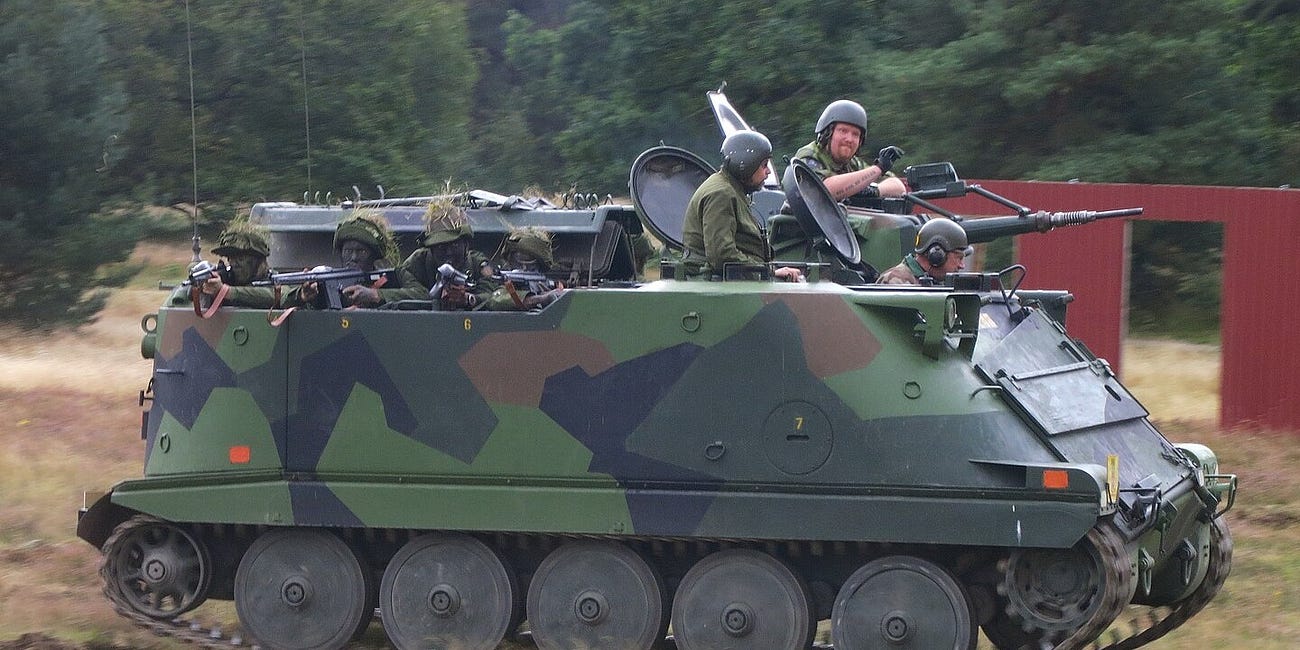The Ukrainian Army's 100th Mechanized Brigade Earned Its German-Made Marder Vehicles the Hard Way
The brigade fought its hardest battle without organic armor
The Ukrainian army has equipped its 100th Mechanized Brigade with German-made Marder infantry fighting vehicles, apparently giving the brigade its first major protected mobility and firepower.
It’s about time. The 100th Brigade, a former territorial unit that the defense ministry in Kyiv promoted to the active army back in March, is one of the newest brigades in the Ukrainian army. Until those Marders arrived, it also was one of the most lightly-equipped army brigades.
And yet, when the Russian army’s 30th Motor Rifle Brigade breached the Ukrainian line in eastern Ukraine just west of the ruins of Avdiivka in April—and swiftly advanced into and eventually through the town of Ocheretyne—the 100th Brigade raced toward the breach, helping to slow the advance.
The 100th Brigade wasn’t inexperienced: its 2,000 or so troopers had seen action many times in Russia’s 28-month wider war on Ukraine. But at the time, the brigade lacked the heavy equipment—Western-made tanks, fighting vehicles and artillery—that gives more elite units such as the 47th Mechanized Brigade much of their combat power.
So the 100th Brigade’s troopers fought without much heavy organic support—and at tremendous risk to themselves. When the defense ministry pulled the brigade off the front line in late June and redeployed it to western Ukraine for rest and reset, the break was well-earned.
And so were the Marders. Germany has pledged to Ukraine 140 of the 31-ton autocannon-armed fighting vehicles. By early June, 100 had arrived—and 10 had been lost to Russian action. Another 20 shipped a few weeks later. It’s possible that’s the batch that equipped the 100th Brigade.
The up-armoring of the 100th Brigade is consistent with a wider trend. Owing to its large stock of Cold War-vintage T-64s, the Ukrainian army has never really hurt for tanks. But its hundred-plus ground combat brigades need fighting vehicles that can transport infantry under armor and support them with autocannon fire. The alternative is for infantry to ride into battle in unarmored trucks—or, worse, to walk.
As recently as this spring, the Ukrainians were short around a thousand fighting vehicles. The mid-April renewal of U.S. aid, over the objections of pro-Russia Republican lawmakers, has helped erase this vehicular debt: the Americans recently shipped another 100 M-2 IFVs. A consignment of ex-Swedish PBV 302 armored personnel carriers, potentially scores of them, also will help.
The steady supply of German Marders extends the mechanization of Ukrainian brigades—and grants the brave 100th Brigade the armor and firepower the brigade desperately needed in April.
Better late than never.
Read more:
Sweden Is Giving Ukraine Every PBV 302 Armored Personnel Carrier It Has. Potentially Hundreds of Them.
The massive, $1.25-billion aid package that Sweden pledged to Ukraine on Wednesday includes every single decommissioned Pansarbandvagn 302 armored personnel carrier the Swedish army still has in storage. Potentially more than 200 vehicles, according to






